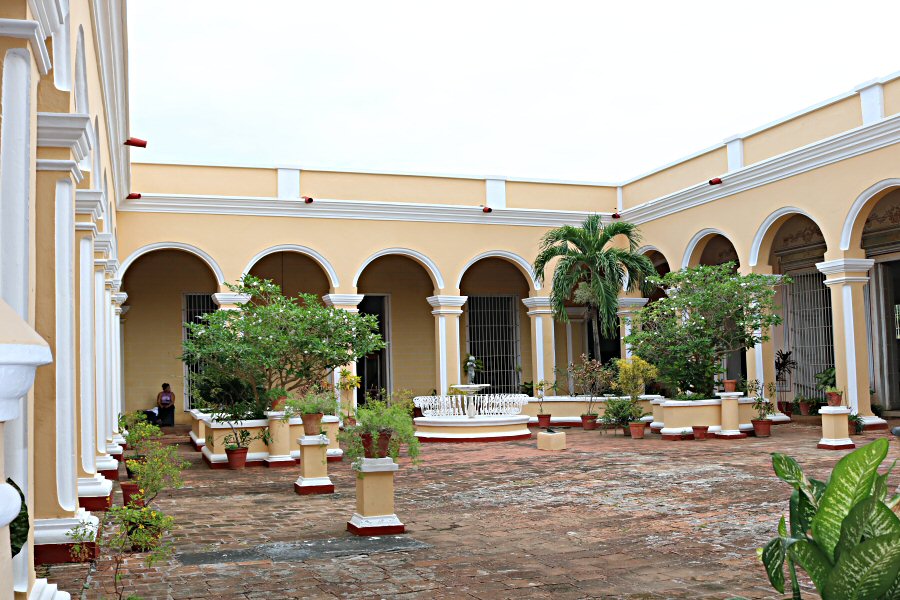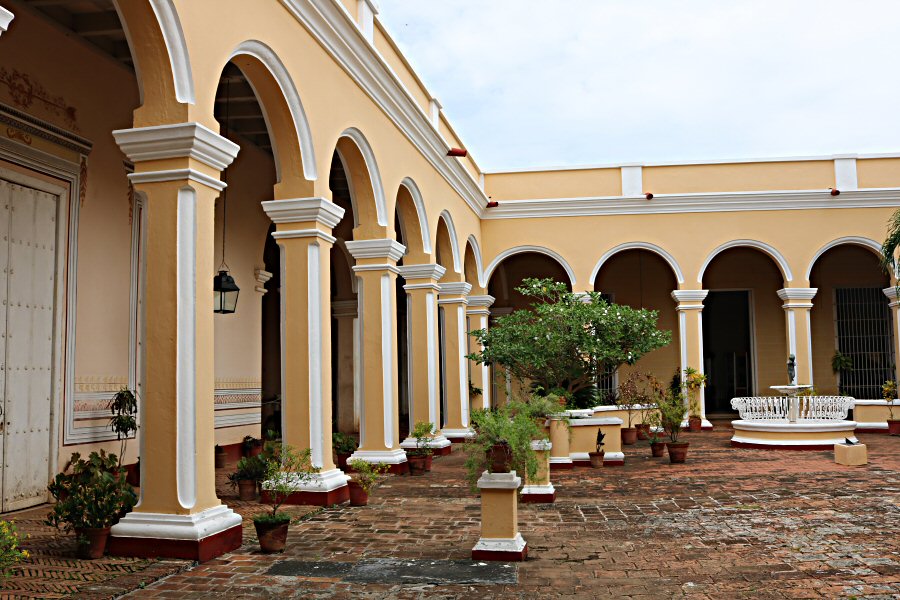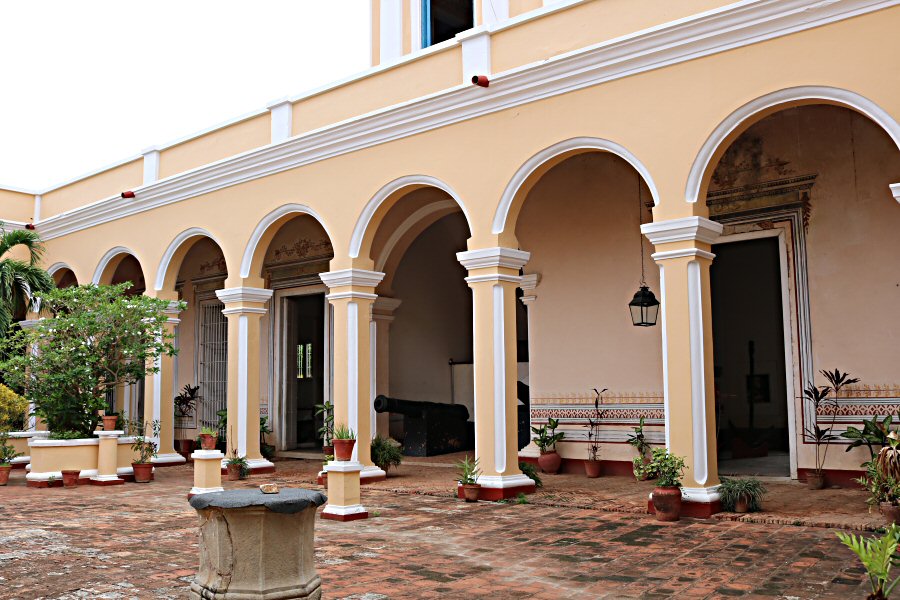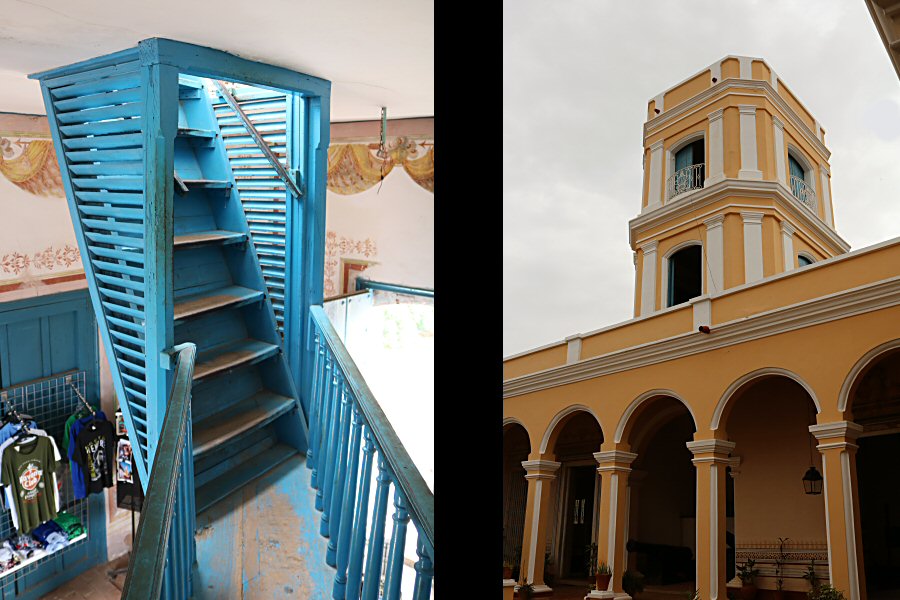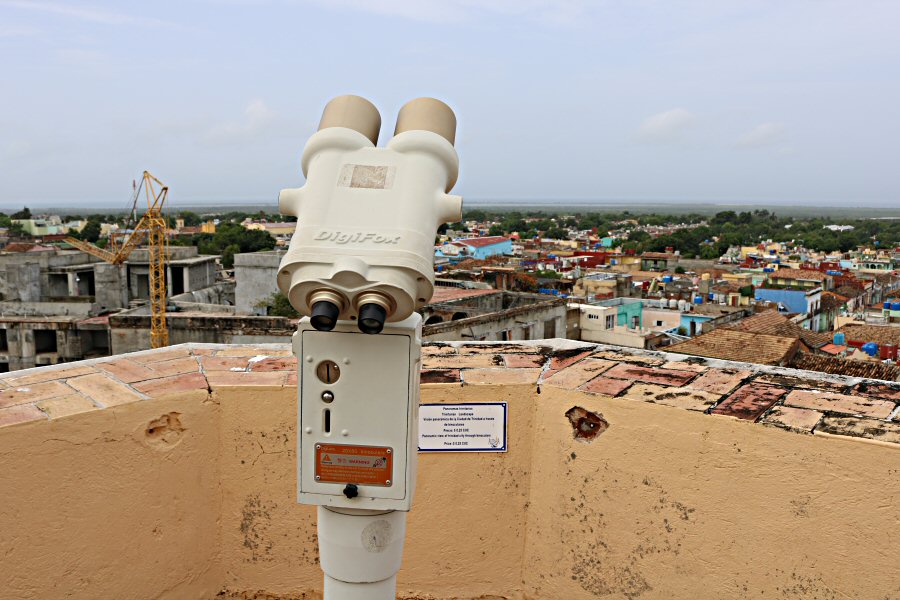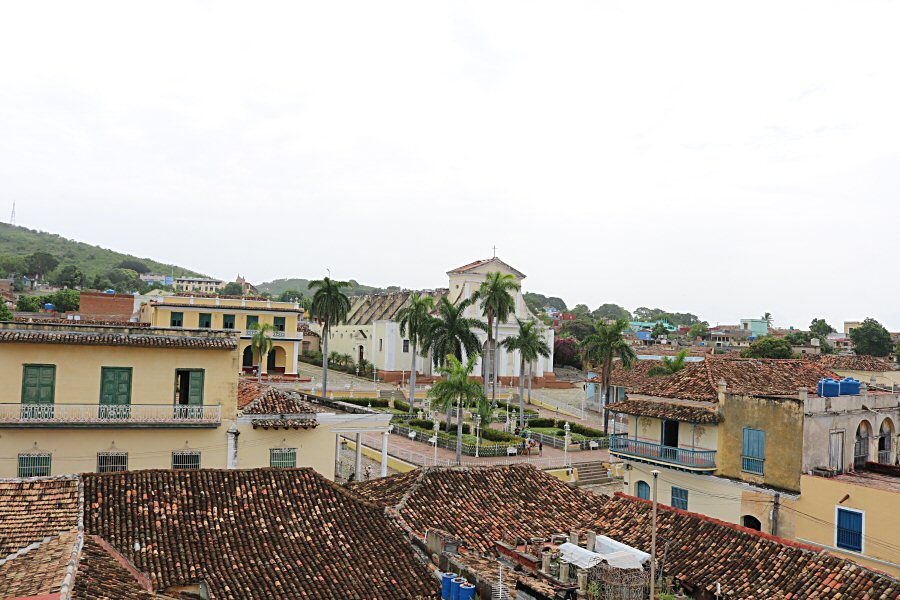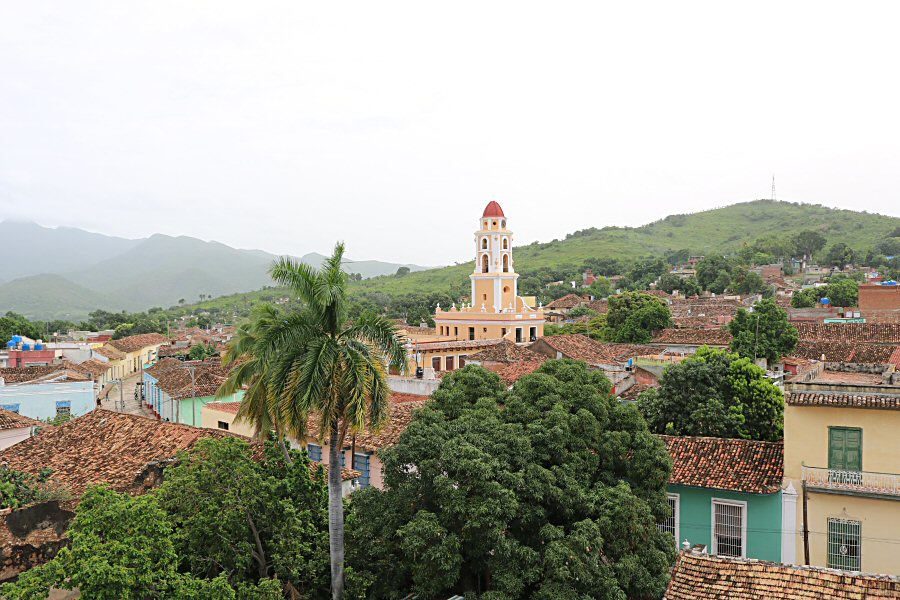Localization
Museo de Historia Municipal (Palacio Cantero) is located on the Desengaño
Street #423, between the Gloria Street and the Callejon de Peña.
Opening Hours
Saturday - Thursday 09:00 - 17:00
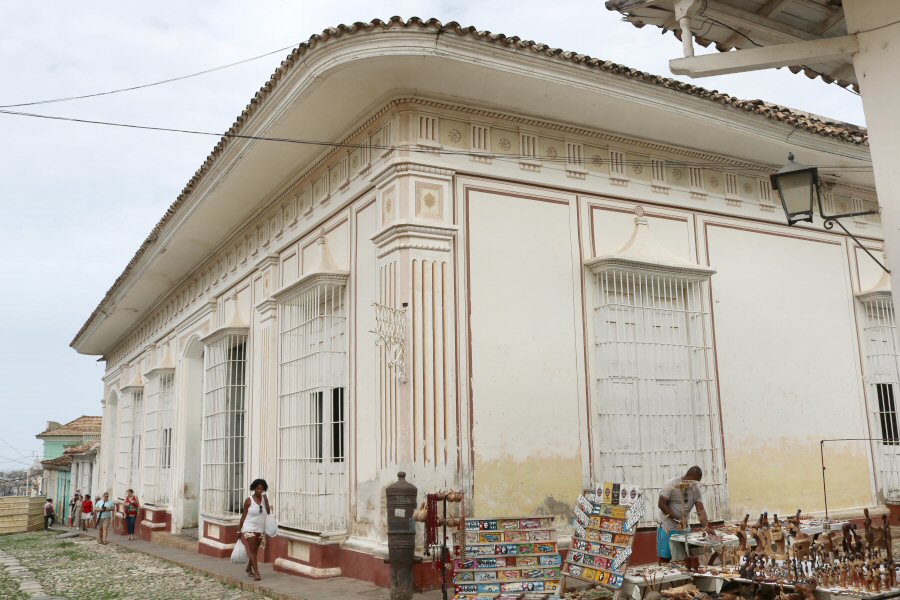

Slightly down the Desengaño Street, one block southwest from the Plaza Mayor, you will find the Museo de Historia Municipal, one of the largest and most impressive of the houses surrounding the Plaza Mayor.
It is in another converted colonial mansion of the city, popularly known as Palacio de Cantero. Currently, it gives service as as the Municipal History Museum which details the history of Trinidad
History
The building served as a dwelling house for the landowner José Mariano Borrell y Padrón, who made his fortune from sugar cane. The construction started in 1827 and it was completed in 1830. When Borrell y Padrón died in 1830, the dwelling house was completely furnished y finished.
The house was inherited by his son José Mariano Borrell y Lemus, Marques de Guaimaro, who sold it to his cousin Deél Maria de Monserrate Fernández de Lara y Borrell in 1841. Maria de Monserrate Fernández de Lara y Borrell made her second marriage with Dr. Justo Germán Cantero in 1842 who became the representative of her assets. Born in Trinidad in 1815, Justo German Cantero was the owner of the Buena Vista, Guinia de Soto and La Caridad sugar mills. It is written that 6.100 of 14.000 slaves that were working on sugar cane plantations and sugar mills, belonged to Cantero family at that time. The famous bell inscribed “Buena Vista Sugar Mill of Don Justo Germán Cantero”, cast by the French José Giroud in Trinidad in 1846, can be seen in its current location in the old Manaca-Iznaga sugar mill today.
The house, known since then as the Palacio de Cantero, successively became the property of different members of the family until 1920, when it was acquired by the company named "Antonio Mauri y Hermanos" that used the building for storage of tobacco for the cigar factory named La Nueva Era and for general warehouse for a long time.
In 1947, the building was taken over by the Pro-Trinidad Association, so that the School of Arts and Crafts started to give service in the building for a long time.
With the nationalization and complete disbandment of civil institutions in 1960, the property passed to the Cuban State, and in 1965 it was transferred to the National Cultural Council (currently the Ministry of Culture).
The building, which underwent a detailed restoration in 1967, was inaugurated as the Municipal Museum of Trinidad on November 8, 1980.
